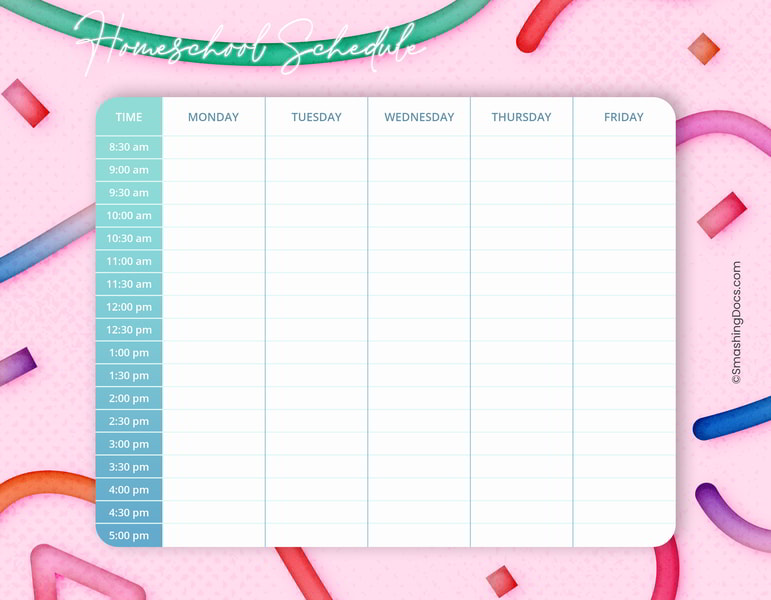
Homeschool Schedule Templates To Inspire Learning
Make learning fun for your brightest start with my printable homeschool schedule template.

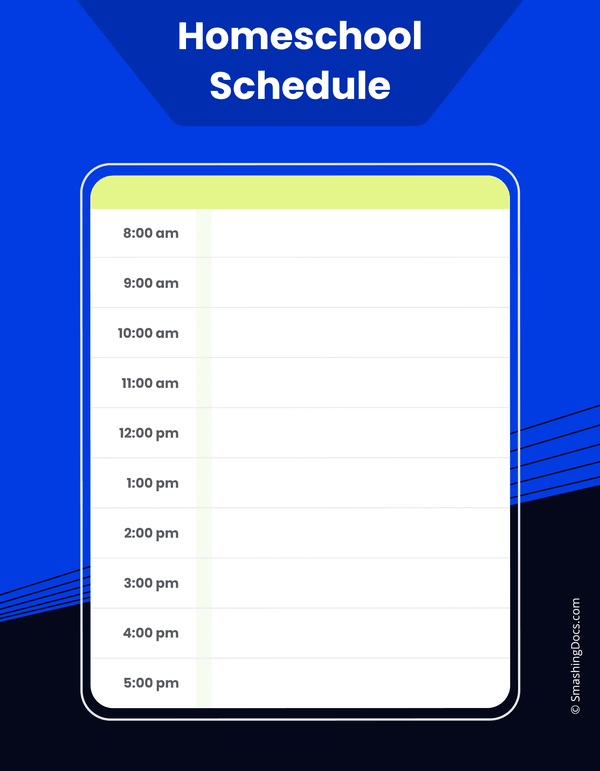
Free Printable Daily Homeschool Timetable Template
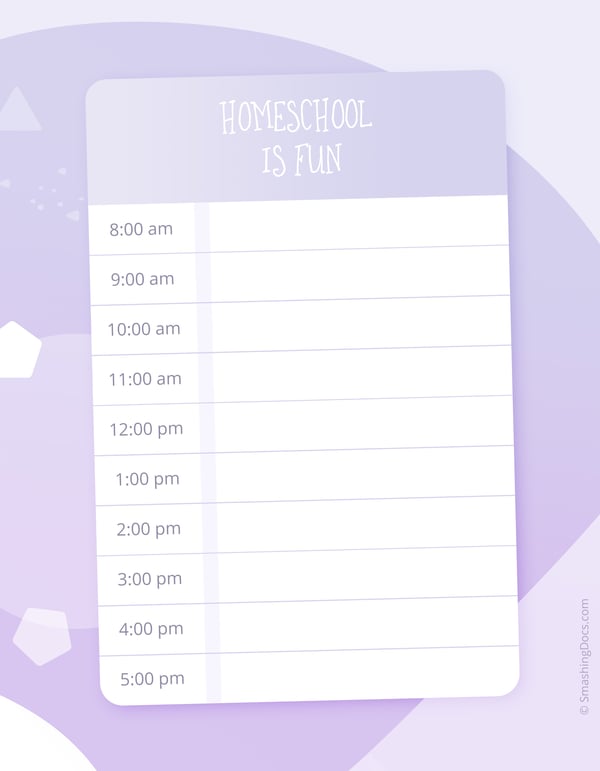
Free Lavender Backdrop Daily Homeschool Template
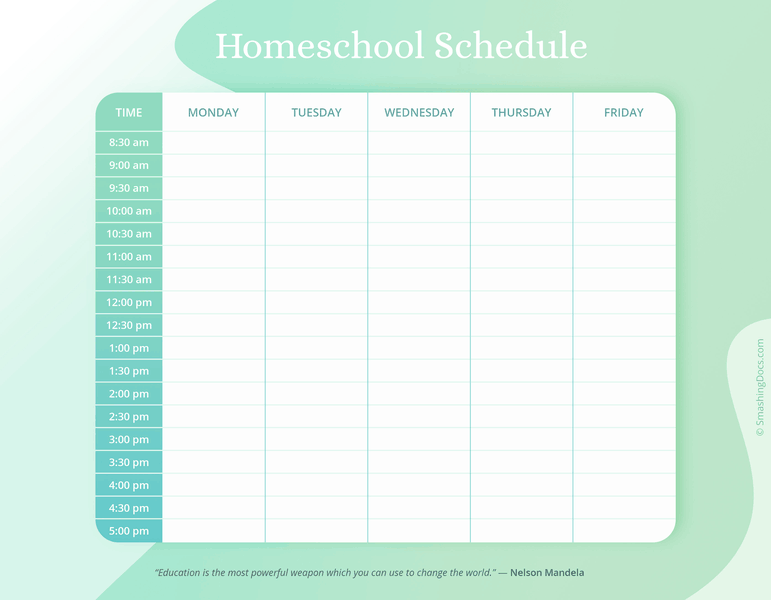
Free Sea-Green Homeschool Schedule Template
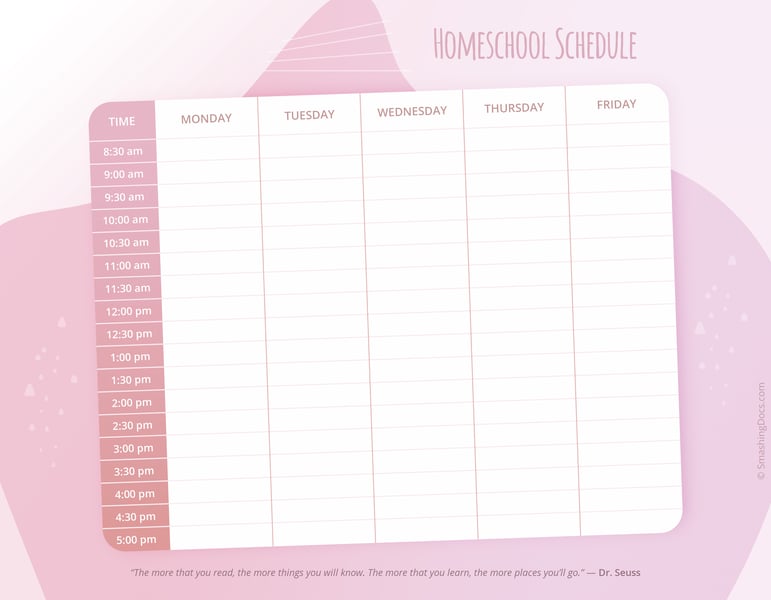
Free Cotton Candy Pink Homeschool Schedule Template

Free Silly Dragon Homeschool Day Planner Template
How to Create a Working Homeschool Schedule
Anyone who has been homeschooling for even the shortest amount of time knows that you need some semblance of a schedule to keep things together. Even the most avowed “unschooler” needs to have some structure to their day, just to ensure all those enriching activities don’t get missed.
The easiest way to create homeschooling schedules is by visualizing everything. Grab yourself a free template from the above and then apply the following tips.
Think Routines Instead of Schedules
Too many things can throw off a meticulously planned schedule. A school subject takes too long to go over, kids take a longer nap, or at-home disruptions make it difficult to stay on schedule. This can lead to stress and frustration both among parents and kids.
Hence, don’t design rigid homeschool schedules. Instead, think of routines. Don’t schedule math for 8 in the morning. Build a routine that starts math right after breakfast instead. By creating such contextual cues (e.g. history follows lunch), you ease the kid into the idea of following rules and initiating the lessons at the right time.
Work With Your Family’s Personality
A homeschooling schedule is supposed to help your family stay productive and happy. It shouldn’t make everybody miserable. Make a schedule that works with your family’s personality.
What’s a family personality? That’s the collection of values, habits, and behaviors that make your family unique (and awesome!). For example, some families are super organized. They love following a tight schedule that leaves them time in the evening for fun and family. Other families take a more laid-back approach. They would be miserable if every minute of every day was scheduled for them.
Prioritize Good Habits and Goals
Schedules and routines help kids develop great habits. When you stick to a basic routine, you teach your kids to focus and develop great work and study habits. At the same time, your daily schedule should be more than a list of things to do. Set goals on a daily, weekly, and monthly basis.
Use a rewards tracking system to offer further incentives for making progress. You can customize a host of certificates for kids to celebrate smaller milestones and plan bigger rewards for significant milestones — e.g. eating out, trips to the museum, or extra privileges at home.
Give Older Kids Autonomy
You may find that it’s better not to exert too much control over the routines your older kids follow. Set some basic guidelines, and outline a few important times of the day. For example, meal time may happen at a certain time or family reading time is always at 6 pm sharp.
Other than that, allow them to build the skills of organization, self-discipline, and time management. You may be surprised at the high standards they set for themselves!
Schedule Breaks
Breaks are a necessary part of homeschooling. Your kids need them to do their best and so do you. Add breaks for fun, rest, and snacks. This gives kids something to look forward to, and you a bit of time before you dive into the next set of lessons.
That said, you should also make short breaks truly restorative. Instead of letting the kids hop on their phone (or doing so yourself), do a quick workout session outdoors, crack some jokes, or let your kiddos daydream or draw for a bit to rekindle their creativity.
Don’t Forget The Siblings
Homeschooling can become unproductive and not very fun if siblings aren’t taken into consideration. If you have kids who are too young for school, are not homeschooled, or are following a different schedule, issues will come up.
Now, you don’t have to keep everyone on the same schedule. You do have to keep everyone occupied. This is a great time to schedule siblings’ independent study time, hobbies, free time with friends, and even a little screen time if that’s something you allow.
